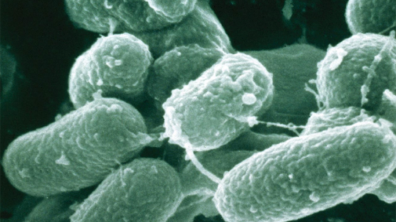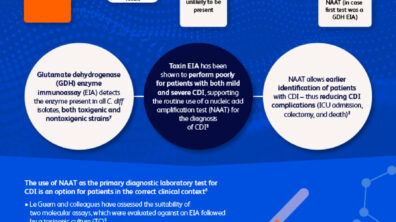
Sexually-transmitted infection (STI) - February 20, 2022
Epidemiology and prevalence of STI in Europe and testing guidelines
Sexually transmitted infections (STIs) continue to remain a major concern for global public health due to the high morbidity associated with them. Associated morbidity includes reproductive tract infections, cervical cancer, ectopic pregnancy, congenital syphilis, and infertility, as well as the morbidity of HIV-related morbidity and illness, and death from acquired immunodeficiency syndrome (AIDS).1
In 2017, there were more than 400,000 cases of chlamydia, 89,000 cases of gonorrhoea and 33,000 cases of syphilis diagnosed and reported by the members of EU/EEA States.2 Since the 1990s the number of new STI diagnoses has increased.2
The World Health Organization (WHO) recognises that the incidence of STIs can be controlled by:
- reducing the risk of transmission in any sexual encounter (e.g., the provision of condoms)1
- reducing the rate of sexual partner change1
- reducing the period of infectiousness in individuals by encouragement to seek early detection and efficacious management of patients with STIs.1
Accurate diagnostic testing is vital in implementing the third strategy as symptoms of common STIs tend to be non-specific and can be caused by a variety of pathogens which may require different treatments. Patients can also be asymptomatic. Undetected and untreated STIs may lead to severe complications which include blindness, bone deformities, brain damage, cancer, heart disease, infertility, birth defects, and even death.3
The four main classes of laboratory diagnostic assays are wet preparation microscopy, antigen detection, culture and nucleic acid amplification tests (NAATs).
Specificity and sensitivity of NAATs vs other diagnostic tests
The microflora composition of the vagina and cervix interfere with the early and rapid identification of gonorrhoea. This is further disrupted by non-user-friendly culture systems and a lack of immediate availability of results.4 The introduction of NAATs has resulted in significant progress in the diagnosis of gonorrhoea in women due to its low detection limit, of crucially important factor for diagnosis of asymptomatic infections.5 NAATs provide a high specificity of 99–100% and the best sensitivity of all diagnostic methods (88-96%) for gonorrhoea.6 This is why NAATs are the recommended diagnostic tests for symptomatic and asymptomatic individuals in the 2020 European guidelines.7 These nucleic acid amplification tests are good for different sample types, including cervical swabs and urine samples.4
NAATs are also recommended by US and European guidelines for the diagnosis of chlamydia.5 NAATs have a high specificity (>99%) and sensitivity (>90%) in the detection of chlamydia.8
The most common method for detection of Trichomonas vaginalis (TV) is wet mount microscopy. In wet preparation microscopy, a sample (e.g., from vaginal discharge) is placed on a glass slide and mixed with a salt solution. Under a microscope, the slide is then assessed for bacteria, yeast cells, trichomonads, white blood cells that show an infection, or clue cells that show bacterial vaginosis.9
TV is a protozoan that can infect the vagina, urethra and paraurethral glands in women. In men, infection is usually of the urethra. The wet mount microscopy technique is quick and inexpensive; however, it is only 36%–75% sensitive in comparison to microbial culture techniques – even if carried out by a trained microscopist.10 In women, NAATs may detect TV prevalence 3- to 5-fold higher compared to wet preparation microscopy.10 Thus, the use of NAATs is recommended by European/WHO guidelines for the detection of TV in women and men, since they have higher sensitivity than both culture tests and wet preparation microscopy.5
Antigen detection is also an option for the detection of TV, with a sensitivity of 82-95% and a specificity of 97-100%.11 NAATs have a higher sensitivity than antigen detection.
The importance of molecular diagnostics in STI detection
The need for efficient and accurate diagnosis is vital to control the spread and treatment of STIs. NAATs continue to be the preferred diagnostic test for the detection of many STIs. The multiple steps involved in a NAAT require fully integrated systems that allow for the testing of many samples and the rapid production of test results. Diagnostic tools should fully automate a variety of molecular diagnostic processes including cell lysis, nucleic acid extraction, real-time PCR set-up, target amplification and detection from a variety of specimen types. Such accurate and rapid testing will help the management of STIs such as chlamydia, gonorrhoea and trichomonas, offering the ability to test for these three targets in the same test, and help guide therapy to address complex patient needs.
- World Health Organization. Laboratory diagnosis of sexually transmitted infections, including human immunodeficiency virus. 2013. Available at: https://www.who.int/reproductivehealth/publications/rtis/9789241505840/en/. Accessed July 2021
- European Centre for Disease Prevention and Control. Developing a national strategy for the prevention and control of sexually transmitted infections. 2019. Available at: https://www.ecdc.europa.eu/en/publications-data/developing-national-strategy-prevention-and-control-sexually-transmitted. Accessed July 2021.
- National Institute of Allergy and Infectious Diseases. Sexually Transmitted Diseases (STDs) Diagnosis 2009. Available at: https://www.niaid.nih.gov/diseases-conditions/std-diagnosis. Accessed July 2021
- Su W, Tsou T, Chen C, Ho T, Lee W, Yu Y, Chen T, Tan C, and Wang P. Are we satisfied with the tools for the diagnosis of gonococcal infection in females?. J Chin Med Assoc. 2011; 74(10):430-434.
- Gannon-Loew K, and Holland-Hall C. A review of current guidelines and research on the management of sexually transmitted infections in adolescents and young adults. Ther Adv Infect Dis. 2020; 21(7):204993612096066.
- Van Dyck E, Leven M, Pattyn S, Van Damme L, and Laga M. Detection of Chlamydia trachomatis and Neisseria gonorrhoeae by Enzyme Immunoassay, Culture, and Three Nucleic Acid Amplification Tests. J Clin Microbiol. 2001; 39(5):1751-1756.
- Unemo M, Ross JDC, Serwin AB et al. 2020 European guideline for the diagnosis and treatment of gonorrhoea. Int J STD AIDS. 2020 Oct 29.
- Janssen KJH, Dirks JAMC, Dukers-Muijrers NHTM, et al. Review of Chlamydia trachomatis viability methods: assessing the clinical diagnostic impact of NAAT positive results. Expert Review of Molecular Diagnostics 2018;18:739-747. Available at: https://www.tandfonline.com/doi/full/10.1080/14737159.2018.1498785.
- University of Michigan Health. Vaginal Wet Mount. 2020. Available at: https://www.uofmhealth.org/health-library/hw6026#hw6029. Accessed July 2021
- Gaydos C, Klausner J, Pai N, Kelly H, Coltar C, and Peeling R. Rapid and point-of-care tests for the diagnosis of Trichomonas vaginalis in women and men. Sex Transm Infect. 2017; 93(S4):S31-S35.
- van Schalkwyk J, Yudin MH, Allen V, et al. Vulvovaginitis: Screening for and Management of Trichomoniasis, Vulvovaginal Candidiasis, and Bacterial Vaginosis. Journal of Obstetrics and Gynaecology Canada 2015;37:266-274.













